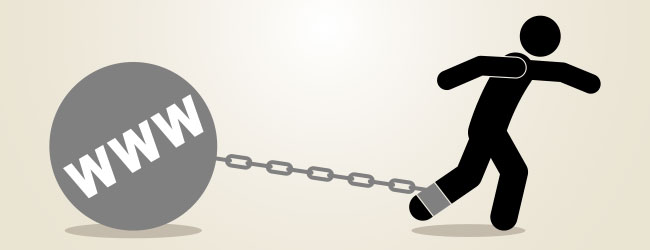Analytics Bounce Rate

The Bounce Rate of Your Site
When you hear the word ‘website statistics’, you may think of the number of ‘hits’ your website has generated. Also known as page views, hits account for each time somebody visits your web pages.
In the past, this data was critical to website owners because it implied the success of your site in gaining visitors. However, this statistic is not very useful for website owners these days. A small business owner could just buy software that generates traffic and literally get hundreds of thousands of hits on their website every day however, it would serve no purpose from a business perspective.
Website statistics has gone ahead in leaps and bounds in recent years. With the presence of online tools such as Google Analytics, anyone with a website can now generate meaningful reports they can utilise to improve their website’s performance. One statistic many website owners don’t understand and don’t use to their advantage is the analytics bounce rate.
What is the Meaning of “Bounce Rate”?
Your bounce rate primarily takes into account each visitor landing on your website, that leaves without clicking on any of your menu’s or links. This statistic is one of the most vital to take note of because it will let you know if your website is engaging your visitor’s or not. If your bounce rate is high, this means your visitor don’t see anything worthwhile, so they leave. To find out how engaging your website is, you can even check out the data that show your visitor rate and the length of their stay on your website.
If you have a high bounce rate, this is a signal that your landing page does not hold any relevance to what your visitors want. What you think they want and what they actually are searching for could be two very different things. Your bounce rate is one of the gauges being used to measure the quality of your website.
When Should You Start Getting Concerned About Your Bounce Rate?
It will really depend on your business and the competitiveness of your industry however if you are getting bounce rates somewhere above 50 percent, then you really should start to look at making changes. However, there is no need to panic immediately even if your have a high bounce rate. Instead, use this statistic as a signal for you to start enhancing your website.
Think of All Your Web Pages Not Just Your Homepage
It is vital for you to keep in mind that people will not necessarily land on your site’s homepage during their initial visit. They may have found your site through a link from another site which drove them to your webpage or one of the search engines may have indexed another one of your webpages and sent traffic there. Think about all your web pages as possible landing pages. Perhaps you are experiencing better bounce rates on one of your other pages. Why not take that information and use it to your advantage on your homepage. Perhaps you could provide similar information on your home page, maybe you could try a similar layout on your homepage. I would suggest you test, measure and tweak a few options to see what works best for you.



